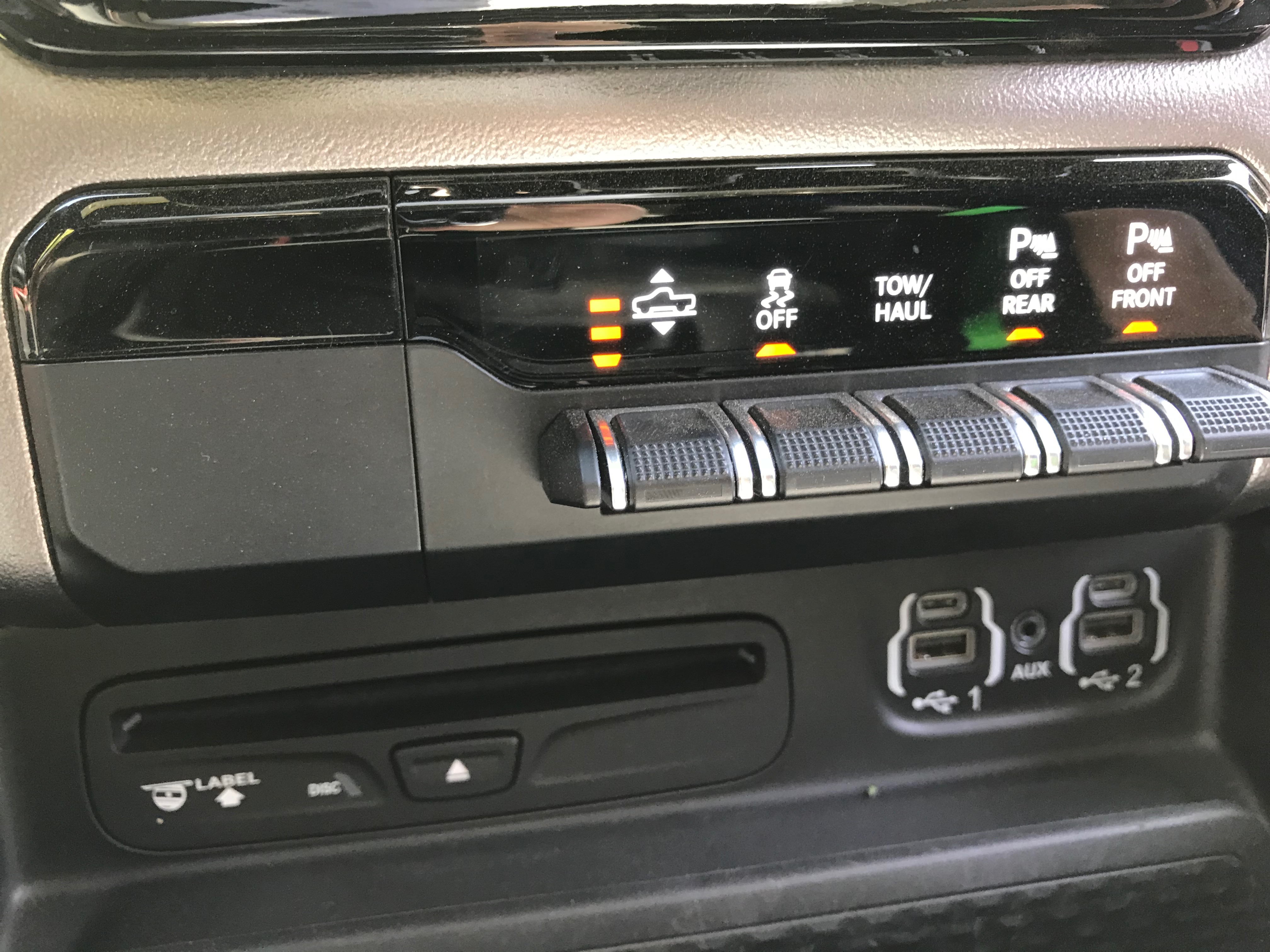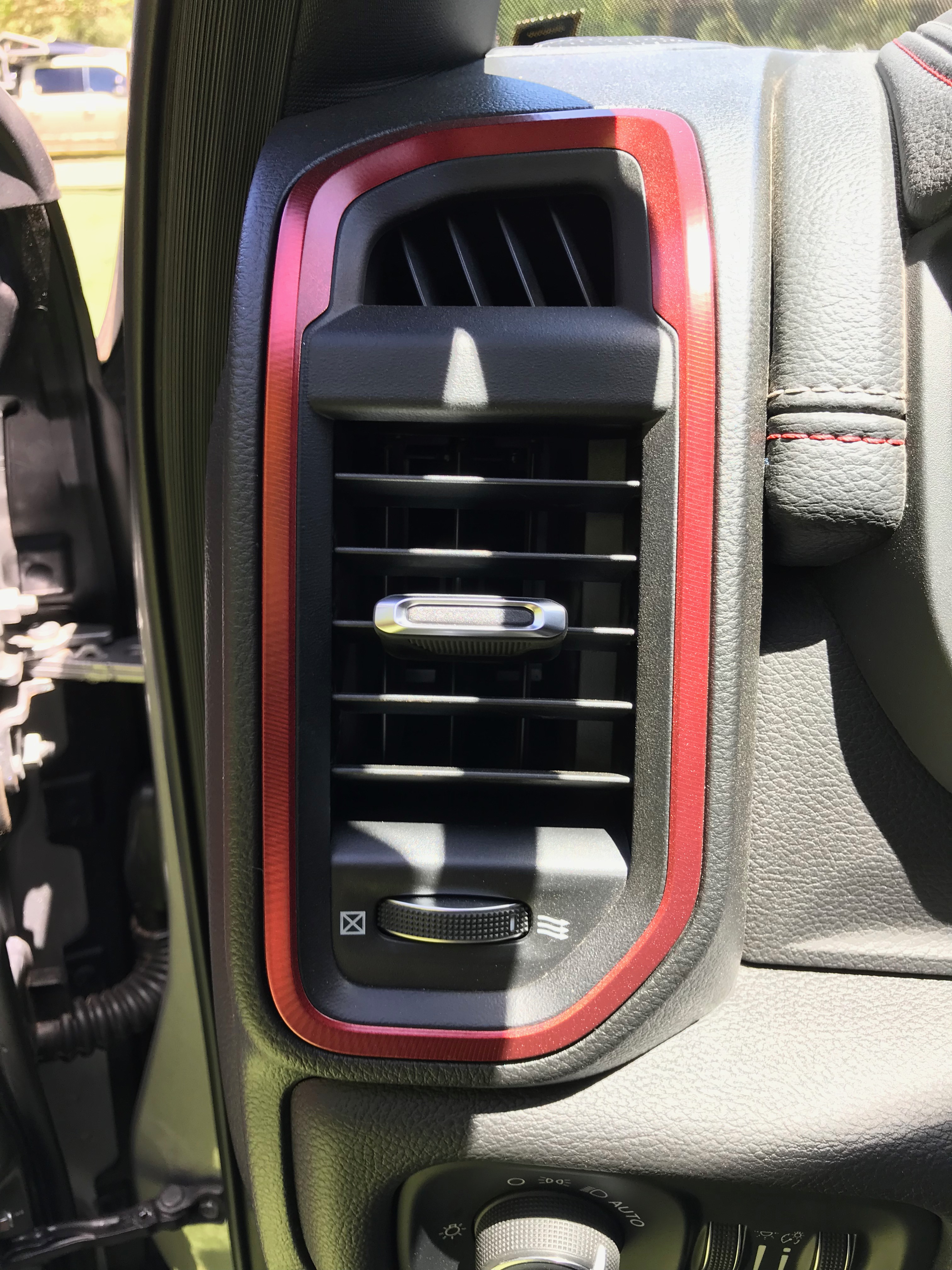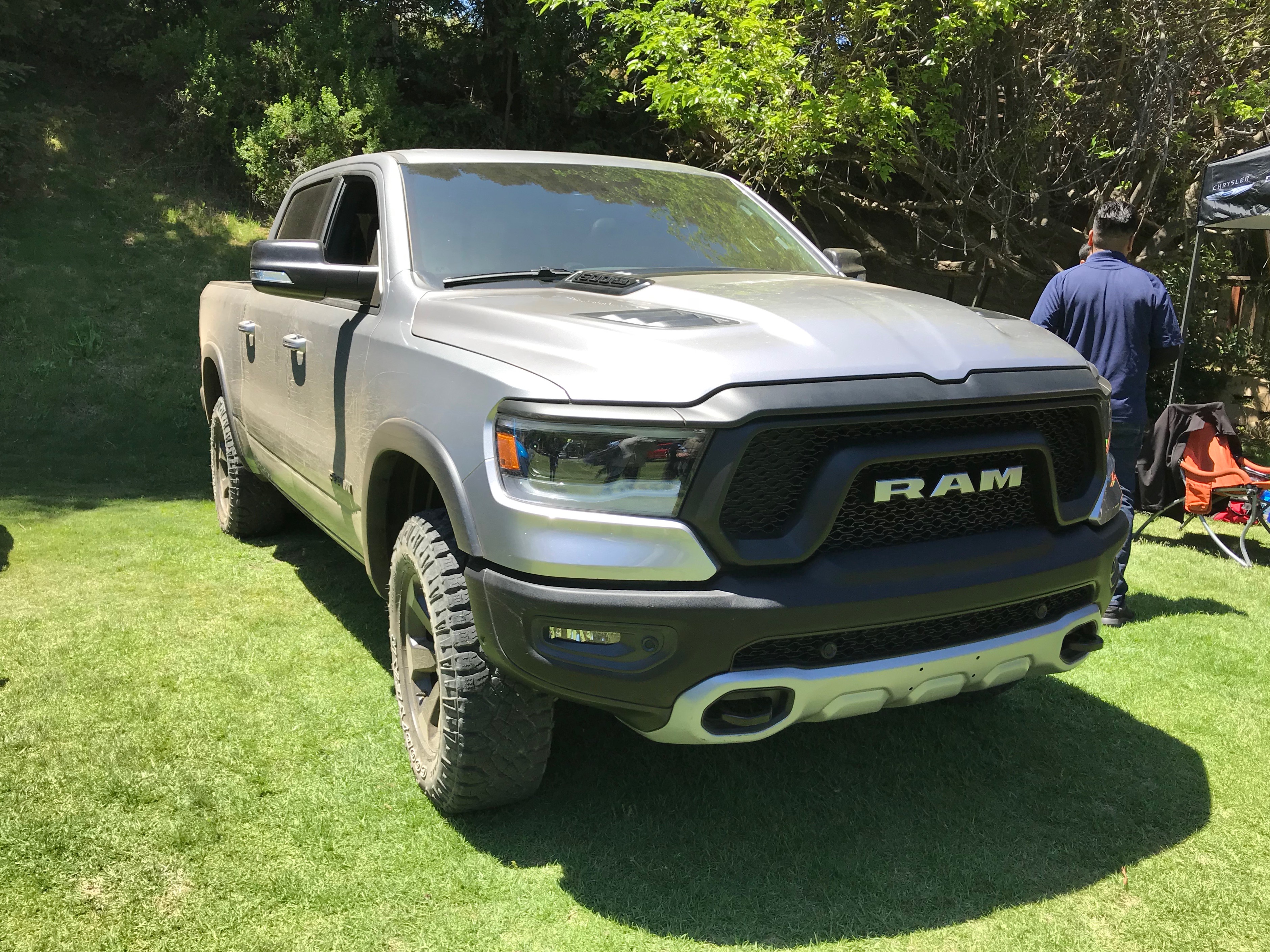
2019 RAM 1500 Rebel
RAM’s budget answer to the Raptor
By Randy Lioz, Editor, Car-ED.com | June 2018
RAM has a bit of Raptor envy. The Ford F-150 Raptor is seen as many as the ultimate off-road truck, with its upgraded suspension dampers, wild engine and bold wide-body styling. But it’s an expensive proposition, with an opening ante over 52 grand, and rising quickly from there with a few option groups.
So RAM thought it had a better idea: take a basic RAM 1500–all-new for 2019–and give it uprated Bilstein monotube dampers, knobby tires, and a look that sets it apart from the standard truck, and save the customer a heap-load of money. As Fiat Chrysler spokesman Scott Brown put it, “Owners wanted the lift and look,” but they didn’t necessarily want to go full-bore if they’re not racing their truck through the desert on the regular. We got a chance to try it out off road at Calamigos Ranch outside Malibu.
What is this vehicle?
The RAM 1500 is the brand’s full-size pickup truck, a rugged workhorse that also provides creature comforts. The 1500 is the brand’s lightest-duty truck, with heavy-duty variants starting at the 2500 level. But that doesn’t mean it can’t handle a ton of weight…literally. It can haul up to 2,300 lbs. of payload in the bed, and tow another 12,750 behind it if equipped right.
The RAM 1500 was redesigned for 2019, getting slightly bigger, but at the same time losing weight, due to its extensive use of high-strength steel, especially in its frame. RAM hasn’t followed Ford into the brave new world of the full aluminum body, but the light alloy has been used for its tailgate and hood. It also adds the option of a mild hybrid system called eTorque, which includes a stop-start system for chilling out at red lights. This is on top of the Multi-Displacement System (MDS) that shuts down cylinders when you don’t need them to sip less fuel. And the Interactive Deceleration Fuel Shut Off (iDFSO) cuts fuel to the engine when the truck is slowing down.
The Rebel variant is a trim level that has been designed to handle occasional rock crawling and mud-slinging, even if it’s mostly used as a daily driver.
Who is this vehicle for?
The Rebel is for someone who needs real truck capability, but also wants the ability to head into some extreme conditions without having to worry about needing to be winched out of trouble. According to Brown, RAM made sure that the Rebel didn’t lose its payload and towing capability on its path toward off-road righteousness, unlike the Raptor, which loses several thousand pounds of payload and maximum towing capability versus its more pedestrian F-150 stablemates.
But of course this is a much less single-minded vehicle, so suspension articulation doesn’t match the highly focused Ford. You won’t be winning the Baja 1000 in this truck, but it’ll still probably make your friends jealous, as they imagine you on heroic Rubicon adventures. And the good news is, you can take your ATVs and dirt bikes with you, along with all the other gear you’ll need for a lengthy trip into the heart of the wilderness.
Why is this vehicle important to you, the buyer?
The RAM Rebel can be configured pretty much any way you want it. Choose the quad cab–with shorter rear doors–or the crew cab. Have it with the 3.6L V-6 or upgrade to the fanboy special 5.7L HEMI V-8. You can even select the eTorque mild hybrid version of the HEMI. Throw in an air suspension or a dual-panel pano roof. The former option will give you two additional inches of ground clearance in off-road mode to fulfill your rock-hopping urges.
Unlike on the 2018 model, the Rebel includes 4WD as standard, but it no longer includes the larger infotainment system from the get-go. For that you have to add about $800, or select one of the big equipment groups for two or three grand, which include fun extras like heated seats and wheel and auto-dimming mirrors. That 8.4″ Uconnect upgrade includes dual-zone climate whether you get it with a package or not.
So head to the RAM build configurator and go nuts! Careful, though. While Rebel pricing starts in the mid-40s, you can spec it up beyond $60,000.
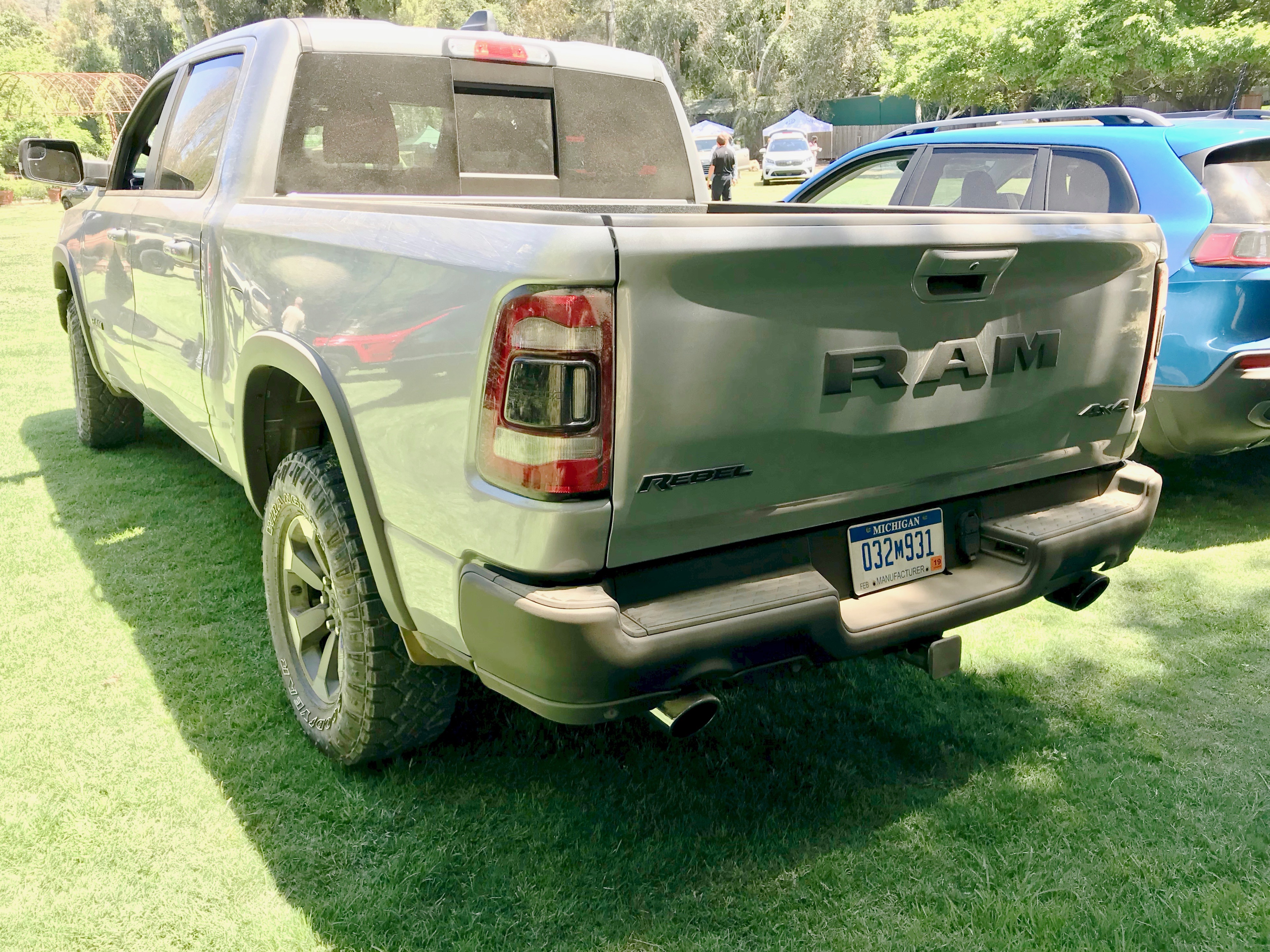
Interesting facts about this vehicle!
- The Rebel’s Bilstein shocks are designed with a remote fluid reservoir to help manage heat. That means that shock performance won’t be compromised if you’re flying along a bumpy trail for an extended period.
 While RAM claims the new 1500 is the most aerodynamic vehicle in its class, it’s added active aero elements as well, lowering a front airdam by 2.5″ as the truck approaches 35 mph, and closing grille shutters when less cooling is needed.
While RAM claims the new 1500 is the most aerodynamic vehicle in its class, it’s added active aero elements as well, lowering a front airdam by 2.5″ as the truck approaches 35 mph, and closing grille shutters when less cooling is needed.- The RAM 1500’s front brake disks are the largest in the class. At 14.9″ they’re actually bigger than some of the wheels that are included on some small cars. Now that’s some stopping power!
- The available Harmon-Kardon audio system features 19–yes, 19!–speakers, and is the most powerful system available in a pickup truck. It even has four active noise cancellation microphones sprinkled throughout the cabin. How do they fit it all?
What Impressed Us / Top Likes:
1 – The 5.7L HEMI V-8 engine is a bit of a legend, with a rabid group of Mopar enthusiasts who swear by it. In this application it’s nice to have access to the engine’s 395 hp and 410 lb-ft of torque, which made scrambling up steep hillsides almost a non-event. We can only imagine what it would be like to experience the added torque of the eTorque system, which our Rebel didn’t have, but FCA says that it can add up to 130 lb-ft of torque to the HEMI when needed, so we can imagine it would be the ultimate light-duty stump-puller.
And while the engine can emit a deep growl when pushed, what impressed us so much was the quietness it exhibited in other states. This is a result of not just a serious focus on isolating engine noise, but also on cancelling it. The RAM’s aforementioned Active Noise Cancellation system works in conjunction with active tuned mass modules (ATMM) that are mounted to the frame. In combination, RAM reports that the cabin stays at a remarkably quiet 67 decibels.
2 – The Rebel is equipped with an electronic locking rear differential to get you out of the tricky stuff, since you can lock it up on the fly. This is also standard with the 4×4 Off-road Package, and available on other versions, but the combination of these features with the Bilsteins and the styling tweaks are what makes the Rebel special. It also includes Hill-Descent Control, and the way that FCA manages this feature is better than others in the industry, with the crawl rate adjustable through buttons on the steering wheel. It’s definitely fun to plant your feet firmly on the floor, away from the pedals, and watch the RAM take over managing the super steep descents that we tackled during our day of off-roading.



 3 – Impressive for a pickup truck is the pano roof, which is only available with the crew cab variant for obvious reasons. Let the sun shine in!
3 – Impressive for a pickup truck is the pano roof, which is only available with the crew cab variant for obvious reasons. Let the sun shine in!
4 – You can actually open the tailgate with the keyfob on many 1500 models. That’s definitely nice when you’re approaching the truck with some full hands.

5 – The RAM Rebel comes standard with FCA’s 5″ Uconnect system, but it’s certainly worth the upgrade to add the 8.4″ screen that’s been the company’s flagship infotainment system for the past several years, particularly since it comes with Android Auto and Apple CarPlay. It’s a marvel of clarity and function, intuitive to use and has nice features like dragging favorites to the bottom main function bar, the way you do on a mobile device or laptop. It also has a WiFi hotspot, but as you would imagine it’s a subscription service.
Items to Make Better (Least Favorite Things):
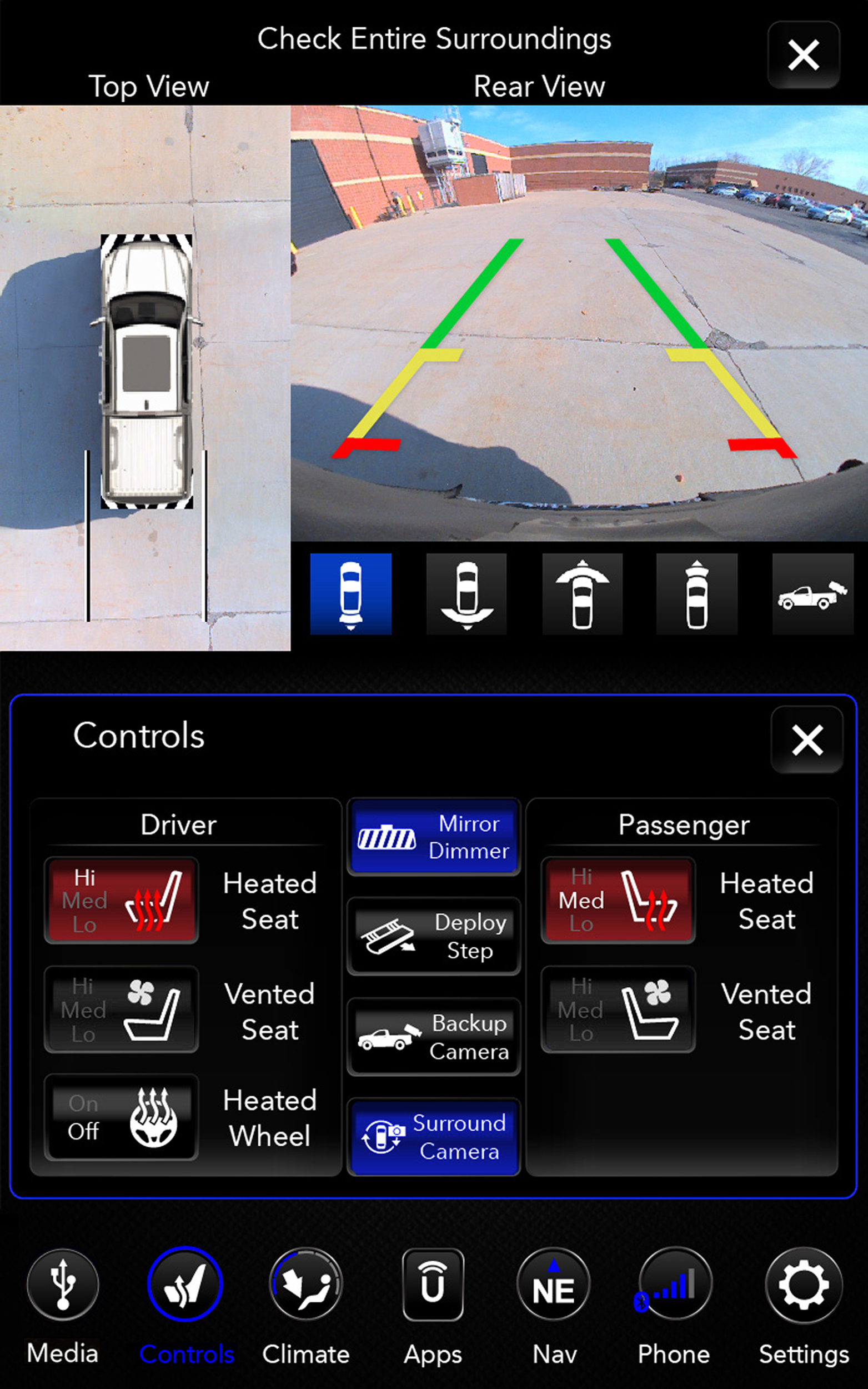
Image credit: FCA
1 – It’s just a shame, though, that you can’t upgrade to the game-changing 12″ portrait-layout screen, which inches toward rivaling Tesla’s setup. And with this screen upgrade you get split-screen capability, which, for people using the Apple or Android software, is a big deal; you can have both that system and the car’s native functions up simultaneously, and we’d guess this is how many systems will spend their time.
2 – Also missing is the birdseye-view camera, which is incredibly helpful when parking a huge vehicle like this. But the real shame of it is the lost benefit in terms of off-roading. Why would the Rebel not include this capability? While the Rebel is no 86-inch-wide Raptor, and 82.1″ it’s over two inches wider than a comparable F-150. Had I had this view, I might’ve been able to figure out if I could’ve cleared that 180-degree turn without 3-pointing it.
Segment and Competitors:
The Rebel being a special version of the RAM 1500, its competitive set is a bit narrower than the mainstream models. Before we get to the specific trucks it’s got in its crosshairs, we’ll lay out the light-duty full-size pickup segment in full:
- F-150
- Chevrolet Silverado 1500
- GMC Sierra 1500
- Toyota Tundra
- Nissan Titan
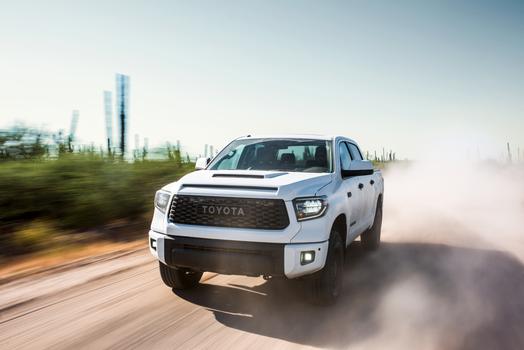
Photo credit: Toyota
Yup, not that big of a segment, and it’s still dominated by the domestic brands, despite the Japanese makers putting in heroic efforts to make great trucks. But the Rebel is an off-road-focused variant, so it’s fitting that we should take a look at what else is out there and how it compares.
Toyota Tundra TRD Pro
Let’s start with what’s probably the closest thing around in concept: the Toyota Tundra TRD Pro. You may recognize the suffix from our recent comparo featuring its little brother, the Tacoma TRD Pro. While that vehicle got an extra 1″ lift from its base model, the Tundra gets 2″, which gives it an advantage versus the Rebel. Both get Fox dampers, which certainly provided a fairly cushy ride off road in the Tacoma, as they’re designed to do, so we’d expect the Tundra would feel more sofa-like over the rough stuff than the Rebel.
The RAM has the advantage when it comes to power, despite both engines being sized at 5.7 liters. Defying the law of round numbers in vehicles, the Tundra’s deficit is 14 hp and 9 lb-ft of torque. And we expect the Rebel to be slightly quicker off the line because of it, though we haven’t yet tested a Tundra TRD Pro yet as it’s not out until the fall. The RAM’s transmission also has 8 speeds to the Toyota’s 6, which will probably be most useful when it comes to towing, especially on hills. But where it makes the most difference is fuel economy, with the RAM getting a 3-mpg advantage despite its win in the power ratings.
The RAM also takes the cake when it comes to tech, with a better infotainment system and optional Apple and Android systems. While Toyota hasn’t released pricing on the ’19s yet, we expect the 2019 Tundra TRD Pro to start close to $47,000, which would give the RAM a bit of advantage there too. All-in, this is pointing towards a win for the Rebel.
Ford F-150 Raptor
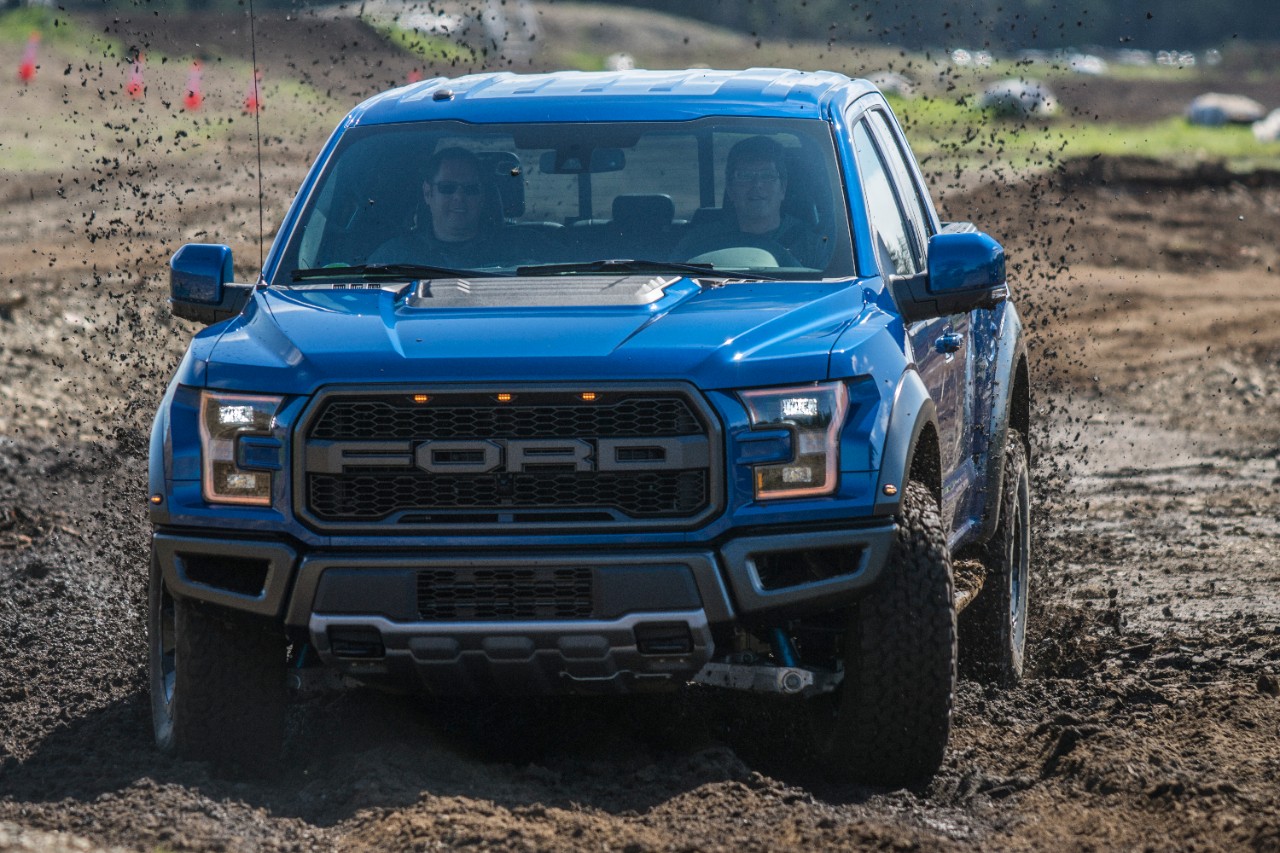
Photo credit: Ford
The current undisputed king of factory off-road pickups, the Raptor has captivated enthusiasts with its bold styling, its desert-running chops and its snarling turbo V-6 engine. It generates 450 hp and 510 lb-ft of torque, so there’s a big advantage for the Ford already. And its powertrain includes a Terrain Management System that adjusts the way it puts power to the ground continuously, particularly in AWD mode, as well as different steering modes. On top of that its more sophisticated suspension gives you the ability to jump over pretty much anything the wilderness will throw at you.
The Raptor’s styling makes it unmistakable on the road, especially at night, when its grille glows with the triple marker lights required because of its width. That bold grille, plus the truck’s flared fenders, vents and graphics package make it a wild-looking beast. The Rebel looks special, but the Raptor makes a statement. Inside, though, the Rebel takes more liberties, splashing its name all over the seats, dash and cluster. With the bold red accents inside, the Rebel does seem to make more of an impact than the Raptor.
The RAM does have a 1-mpg combined advantage, but given the Raptors power bump, it’s a fairly modest difference. Also more modest than we might have expected is the price difference. The Raptor is popular enough that Ford just bumped the pricing for the 2018 model by over $1,000–$52,170, up from $51,080–and against the Rebel’s pricing, it’s only about $6,000 dearer. That’s not an insignificant amount of money, but considering that the Ford is expected to hold its resale value significantly better, it may actually make the Raptor cheaper to own.
Given that, unless we were faced with the need to tow over 8,000 lbs, we’d actually choose the hot-doggin’ F-150 Raptor.
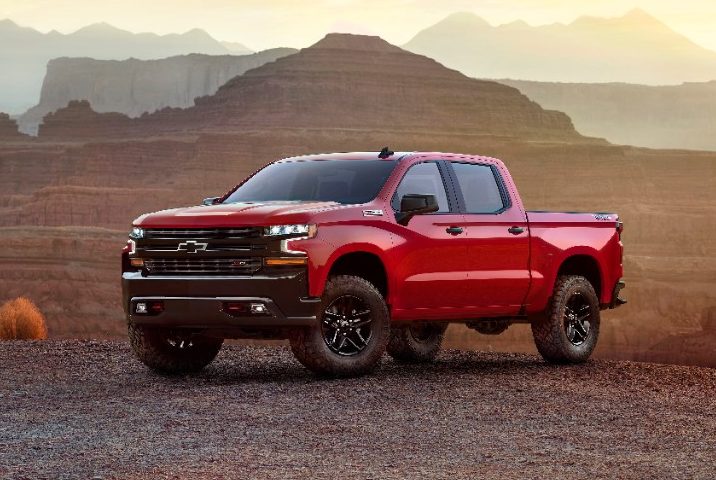
Photo credit: GM
2019 Chevy Silverado Trailboss
Chevy is has redesigned the Silverado, and with it will come yet another off-road-spec truck, the Trailboss. It’ll be much more like the Rebel, in both equipment and price, so we’ll bring you all the details when we get our hands on one.
Pricing and Availability:
The 2019 RAM 1500 Rebel is on sale now, starting at $44,140 with destination, which is a Crew Cab with 2WD. The 4WD system costs $3,500 more, but you can take off $1,300 from that if you want a 4WD Quad Cab (the Quad Cab doesn’t come in 2WD spec). The HEMI engine upgrade costs $1,195, or $1,995 with eTorque, while the air suspension costs $1,795. Our test truck was also equipped with the $3,000 Level 2 Equipment Group.


